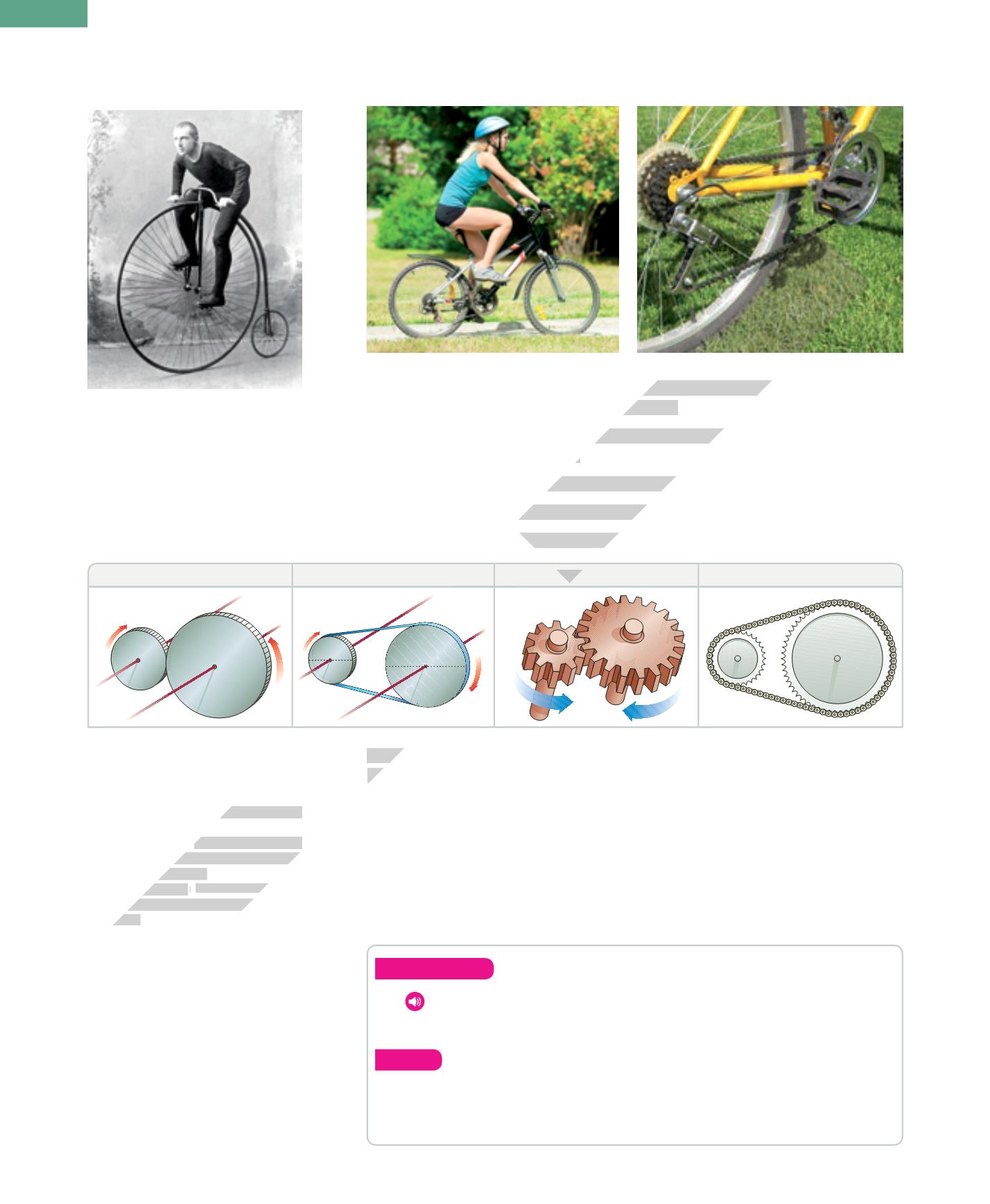
108
Understand
14.
Listen to the statements about rotary transmission and say true or
false.
Apply
15.
Work in groups. List everyday machines that use (1) pulleys and
belts (2) gears and sprockets. In each case, what advantage does the
mechanism give us?
12
reliable
:
always good, that you can
trust
13
conveyor belt
:
a moving band of
material that transports objects from
one place to another
14
home appliance
: a machine that does
a specific job in the home (e.g. washing
machine)
3.
TROTARY TRANSMISSION
With a modern bicycle, we can transmit rotary motion from the pedals to the back
wheel and increase the speed of rotation easily.
Rotary transmission systems put two rotating elements into contact. These
mechanisms have two purposes:
❚❚
transferring rotary force from an input location to another location.
❚❚
changing the rotary speed by using rotating elements of different sizes.
We can perform these functions with various mechanisms, such as the following:
Friction wheels
Pulleys with belts
Interlocking gears
Sprockets with chains
The first bicycles had pedals on the
front wheel. The front wheel had
to be very large so that riders could
reach higher speeds. However, this
made the bicycles uncomfortable and
dangerous.
All of these mechanisms keep the same speed ratios, but each one offers a different
advantage. For example, friction wheels are simple but interlocking gears are more
reliable
12
because they don’t slip easily.
Metal chains are stronger and last longer than rubber or plastic belts, but chains
are also more expensive.
Applications
:
friction wheels and pulleys are often used in toys and other devices
with moving parts, such as industrial rollers or conveyor belt
13
systems. Gears are
used in clocks, while sprockets and chains are common in home appliances
14
.
ADVANCE EDITION


